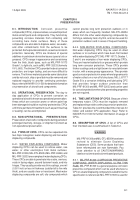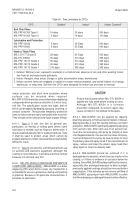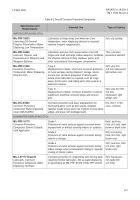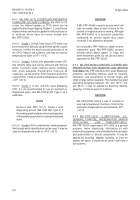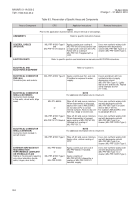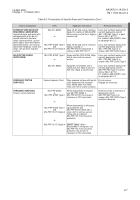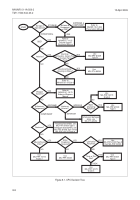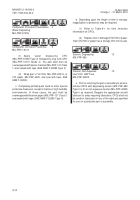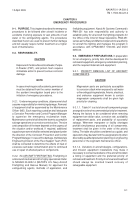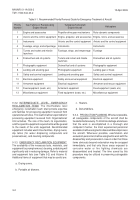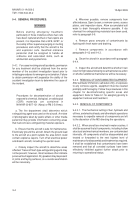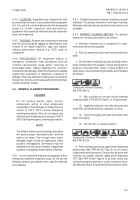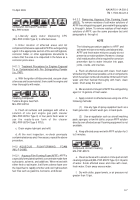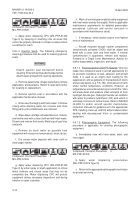TM-1-1500-344-23-2 - Page 155 of 240
9-1
NAVAIR 01-1A-509-2
TM 1-1500-344-23-2
15 April 2009
CHAPTER 9
EMERGENCY PROCEDURES
9-1.
PURPOSE.
This chapter describes the emergency
procedures to be followed after aircraft incidents or
accidents involving exposure to vast amounts of salt
water or fire extinguishing agents. The procedures
described herein are used to prevent further damage
and will usually require further treatment at a higher
level of maintenance.
9-2. RESPONSIBILITY.
CAUTION
Exposure of metal surfaces to salt water, Purple-
K-Powder (PKP), and protein foam requires
immediate action to prevent serious corrosion
damage.
NOTE
In cases involving aircraft accidents, permission
must be obtained from the senior member of
the accident investigation board prior to the
initiation of emergency procedures.
9-2.1. Under emergency conditions, all personnel shall
assume responsibility for minimizing damage. Removal
of equipment shall be supervised by the Maintenance
Officer (MO). Each reporting custodian shall designate
a Corrosion Prevention and Control Program Manager
to supervise the emergency reclamation team.
Maintenance control shall direct the team to accomplish
salvage operations or corrosion control action. The size
and composition of the team depends on the urgency of
the situation and/or workload. If required, additional
squadron personnel shall be selected and placed under
the direction of the Corrosion Prevention and Control
Program Manager. In case of fire damage, the Materials
Engineering Division of the Fleet Support Team (FST)
shall be contacted to determine the effects of heat or
excessive salt water contamination prior to continued
use or repair of affected parts or components.
9-2.2. (N) AIRCRAFT FIREFIGHTING. Firefighting in
and around crashed aircraft is highly specialized. Refer
to NAVAIR 00-80R-14 (NATOPS U.S. Navy Aircraft
Firefighting and Rescue Manual) for approved fire
extinguishing agents, methods of application, and
firefighting equipment. Naval Air Systems Command’s
PMA-251 has sole responsibility and authority to
establish policy for all aircraft fire fighting programs for
the Office of the Chief of Naval Operations. PMA-251
serves as the Navy and Marine Corps technical authority
for aircraft fire fighting and manages this program in
accordance with OPNAVINST 5100.8G and DODI
6055.06.
9-3. EMERGENCY PREPARATIONS.
In preparation
for an emergency, priority lists shall be developed for
removal of equipment, emergency reclamation planning,
and the required materials and equipment.
9-3.1.
PRIORITY REMOVAL LIST OF AIRCRAFT
COMPONENTS.
CAUTION
Magnesium parts are particularly susceptible
to corrosion attack when exposed to salt water
or fire extinguishing materials. Avionic, electrical,
and ordnance equipment known to contain
magnesium components shall be given high
priority for cleaning.
9-3.1.1. Table 9-1 is a list of aircraft component groups
arranged in order of recommended priority for treatment.
Among the factors to be considered when removing
equipment are dollar value, corrosion rate, availability
of replacement parts, and probability of successful
salvage. Whenever manpower or facility shortages
prohibit simultaneous processing of all components,
treatment shall be given in the order of the priority
listing. The table should be considered as a guide, and
operations may deviate from the assigned priority when
directed by qualified production planning or engineering
personnel or the cognizant maintenance officer.
9-3.1.2. Variations in aircraft designs, configurations,
and mission equipment installations may make it
necessary to contact custodians of the aircraft to obtain
a listing of equipment and the preferred priority of
removal and treatment. Priority of removal and treatment
should always be oriented toward recovery of
salvageable equipment.
Back to Top

